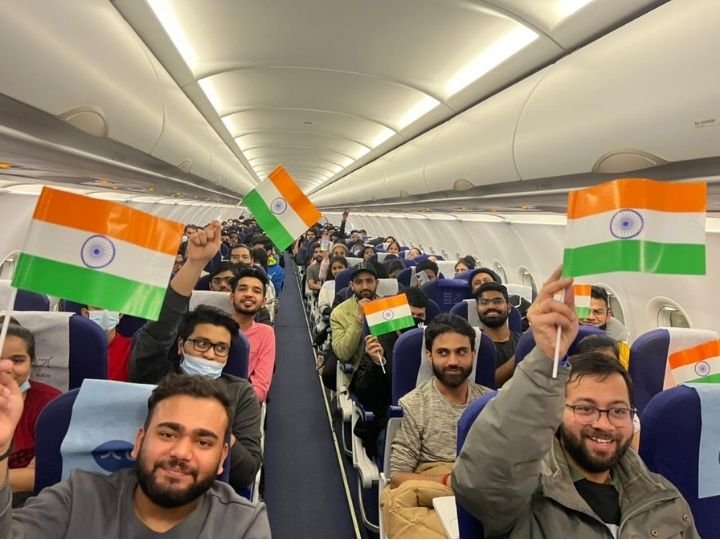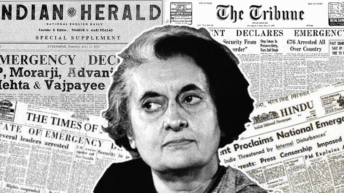|
Listen to article
Getting your Trinity Audio player ready...
|

Introduction
Over the last decade or so, India has done remarkably well in evacuating its citizens from conflict zones across the world. The recent evacuation of over 20,000 citizens, mostly students studying in Ukraine, is yet another example of the care and compassion for fellow citizens in foreign lands, which has come to exemplify India’s foreign policy. The remarkable change was brought about in the NDA government headed by Prime Minister Modi in 2014, under the stewardship of the then External Affairs Minister, Ms Sushma Swaraj and is now a firm pillar of India’s Foreign Policy.
In April 2015, under Operation Raahat, over 4,640 Indian citizens were evacuated from war-torn Yemen, along with 960 foreign nationals from 41 countries. This was also the month when Nepal was struck by a 7.8 magnitude earthquake, post which over 43,000 Indians were brought back both by road and by air. The outbreak of the Covid-19 pandemic also saw the evacuation through the Vande Bharat Mission of over 1.4 million Indians from across the globe in specially chartered flights. All this amplifies the statement “sympathy is no substitute for action”. Towards that end, Indian foreign policy has been very proactive and action oriented in looking after the interests of its citizens in foreign lands.
Operation Ganga
The evacuation of over 20,000 students studying in Ukraine was a very complex operation. While an advisory was issued by the Indian Government in mid-February to leave the country, the students were also concerned about their studies and the financial cost they would have to undergo if they left prematurely and war did not break out. They were, therefore, reluctant to leave, especially as the Ukraine President, Volodymyr Zelenskyy stated as late as on 22 February: “We believe that there will be no large-scale war against Ukraine, and there won’t be a wide escalation from the side of the Russian Federation“. The students, understandably, also had no idea how war could alter the ground situation and make mere survival formidable and difficult.
For the embassy staff in Ukraine as also in the neighbouring countries—Poland, Slovakia, Hungary, Romania and Moldavia, from where the stranded Indians were evacuated, it was a herculean task to man control rooms 24×7, organiseevacuation and man the multiple crossing points with a staff strength that was not designed to take on such loads. The students, when caught in cross-fire did not know what to do and it was near impossible for embassy staff, with the meager staff at their disposal, to organise evacuation, arrange food, shelter and transport from their university till they could be put on an aircraft. While the embassy staff still persevered with what they had, it was not possible to place personnel at each and every point. For example, the border between Poland & Ukraine has 11 rail and road crossing places where passengers from Ukraine could cross over to Poland. Obviously, with the limited staff at its disposal, only a few of these crossing points had embassy personnel to help and assist the stranded students. The same challenges were observed in the multiple crossing points between Ukraine and Moldova, Hungry, Slovakia and Romania. With each embassy having a staff strength of just 15 to 20 personnel, there would have been shortcomings in performing a complex operation, which involved arranging transport, manning multiple crossing sites, arranging accommodation, food, documentation and preparing aircraft manifestos. Despite that, it must be said to the credit of all the Indian embassies that they persevered and did a remarkable job. This was acknowledged as much by an opposition Member of Parliament, Shri Anand Sharma, who heaped praise on the efforts of the Ministry of External Affairs and diplomats for evacuating Indian nationals from war torn Ukraine.
Evacuation and rescue missions are specialised operations that require plans for the move of students from their universities to the border regions. All of them cannot be assembled at one point but would require to be moved to different locations in a staggered timeframe depending upon the distance and transportation system available at that point in time. In the instant case, the priority was to first move out every Indian citizen from Ukraine and thereafter, also maintain continuous evacuation by air so that space can be created at holding areas for new evacuees to arrive. This has brought about valuable lessons for the future, should such a need arise.
Lessons Learnt
Strengthening of Embassy Staff. When such like emergencies are anticipated, it may be in order to temporarily boost up the strength of embassy staff. Trained personnel skilled in such functions are readily available from the Indian Armed Forces and it is for consideration that in such circumstances, military personnel be deputed to the MEA for a short duration. They have the experience and the necessary skill sets to operate in uncertain conditions and most of them are trained to undertake aid to civil authority and humanitarian missions. Officers of the Armed Forces are also used to operating in hostile conditions and in a scenario like the one we had to face in Ukraine, they could have also been selectively employed for the extrication of stranded students from Eastern Ukraine.
Need for Contact Details of Diaspora. Timely forewarning of citizens individually and collectively is important. Therefore, every Indian student or citizen in a potentially unstable environment should register with the Indian embassy in the host country with a mobile number and email for periodic advisories and grievance redress. Bulk SMS is also essential to advise diaspora about routes to be taken and of crossing points to avoid the rush at a particular place during the evacuation process. In addition, it is vital for MEA to issue advisory to states and parents through a bulk SMS system so that states can also advise parents to recall their children and make finances available for the purchase of tickets. In such situations, a requisite number of flights may not be available, so it would be in order to also keep the Ministry of Aviation in the loop so that more aircraft can be pressed into service if demand is more than the availability.
Students Coordinators & Volunteers to Act as Self-help Groups. Invariably it has been seen that most stranded citizens in disaster look towards the government agencies for evacuation and rescue. Time has come to make citizens aware during normal conditions how to assist fellow citizens and victims so that burden on the government is reduced. In addition, diaspora should also have situational awareness and not always depend upon the government agencies for spoon-feeding. When a threat is anticipated, it would be in order for the Indian diaspora to get its acts together and create self-help groups. We must learn from Syria, Libya, Kuwait, Corona evacuation, Afghanistan and Iraq. No other country has faced such a huge evacuation operation as was undertaken by India.
Conclusion
While the MEA has done an excellent job in evacuating Indian citizens from countries that have erupted into violence, it is time now to put in place a structured approach for evacuation of diaspora during the crisis to include mobilisation plans for evacuation. Contingency plans for each country must be prepared and put into operation should the need so arise.






Add comment